If the Prosecutor’s Office has no supplies, it is not due to a lack of resources, but to a lack of good management
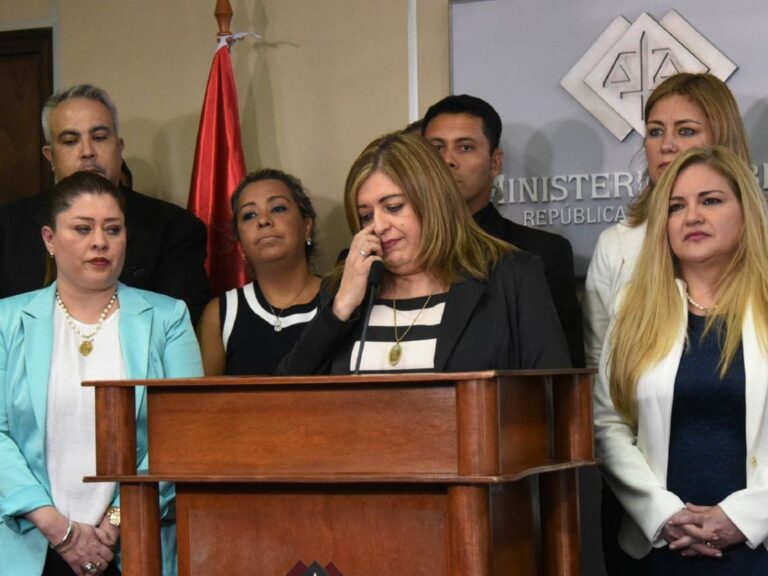
By Rodrigo Ibarrola
Faced with the threat of impeachment, the unions of the Public Prosecutor’s Office summoned a meeting for Friday, February 18. In the announcement, they called to “discuss the current situation of minimum conditions to exercise the work in terms of human resources limitations, lack of goods and supplies, lack of reagents”.
This claim is not new. In 2018, the forensic medical examiner, Pablo Lemir, had already spoken out about the lack of supplies in the Prosecutor’s Office, adding that they even resort to self-management, that is, out of pocket expenditure. In October 2021, in the framework of the discussion of the budget for 2022, the staff called for a strike against what they considered a “cut” to their budget. What they were really demanding was the rejection of their proposal to expand the preliminary draft, 74% of which would be allocated to civil servants’ remuneration.
During her presentation before the Congress budget sessions, the Attorney General of the State, Sandra Quiñonez, presented the reasons why the budget assigned in the preliminary bill required the proposed “increase”, a circumstance that she defended with different arguments for each item. Therefore, we will review them with a brief analysis of its budgetary management.
First of all, it should be mentioned that the budget execution, in general, coincides with that presented by the Public Prosecutor’s Office, reaching relatively high levels.
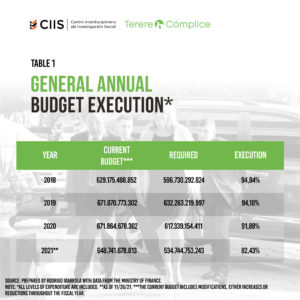
However, this is a misleading calculation, since it includes expenditure subgroups that do not require a contracting process governed by Law 2051, such as Personal Services, Basic Services, and Travel and Per Diems. In other words, these items are executed without necessarily having a great management capacity, and some of them are so large that, by being executed, they could already indicate that the institution is executing its budget well.
Take, for example, item 100 (salaries), which is paid month after month almost automatically and without significant changes. This item is the one with the best execution (average of 97.3% in the last three years) and, since it represents 91.4% of the entire budget, it has a disproportionate impact on budget execution. Thus, even if the execution in all other items were zero, the overall execution of the institution would still be 87%, if we take the 2020 data. Hence the importance of discriminating the items.
Except for the items that are easier to execute because they do not require bidding (personal services, per diems) or because the procedures are simple, with standardized specifications and little competition (fuel and rent), most of the expenditure subgroups show poor execution.
In Table 2, we omitted Personal Services (100), Basic Services (210) and Travel and Per diem (230). Thus, the budget execution reaches only 43.75% in 2020 and 61.58% as of November 26, 2021.
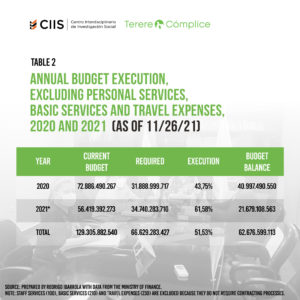
When the budget increase was requested, vehicle and building repairs were one of the justifications. These actions are included in expenditure subgroup 240, which remarkably denotes a low budget execution of 50.7% and 58.95% for the years 2020 and 2021, respectively (Table 3). So, if vehicles and buildings are not repaired, it is not due to lack of resources.

Another argument is the lack of stationery, office supplies, toner, inks, cleaning, and other items, which are included in Expense Subgroup 340 (Table 4). In this case, the data reveal an execution of 65.8% (2020) and barely 40.15% (2021). Therefore, if there are no office and cleaning supplies, it is not due to a lack of budget balance.

A pressing need, according to statements made by trade unionists of the Public Prosecutor’s Office in various media, are pharmaceutical and medicinal products, chemical compounds, medical-surgical and laboratory materials, which correspond to subgroup 350 (Table 5). These also show the same pattern of insufficient execution, especially in 2021, where they do not reach 16% of execution.
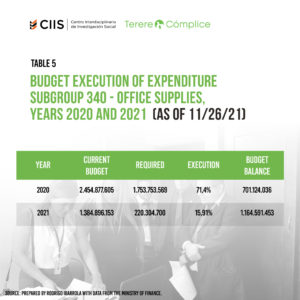
For its part, the acquisition of roofing corresponds to Subgroup 390 (Table 6), another item with low execution for being a need that justifies the requested increase.
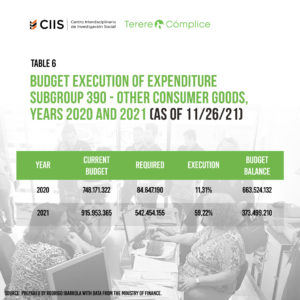
The strengthening of the vehicle fleet was also emphasized, which refers – we presume – to the acquisition of new vehicles, which is included in item 530. This item shows a low execution (Table 7), again.
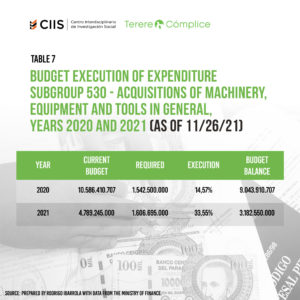
We continue with the furnishings and equipment for the headquarters, which are grouped under item 540, also with the same trend (Table 8), especially in 2021, where it does not reach 13%.
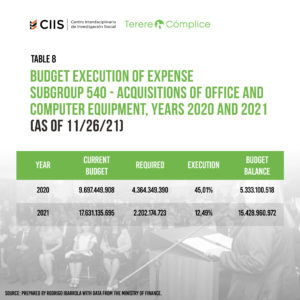
Finally, we will mention the investment item (Expenditure Group 500), which requires special attention. In this item the Prosecutor’s Office requested an increase of up to about 16,988 million guaraníes by 2022. However, in the last four years, it was allocated 98,654 million guaraníes, of which it executed (spent) less than half (Table 8), without exceeding 11 billion guaraníes, which is a symptom of a low execution capacity.
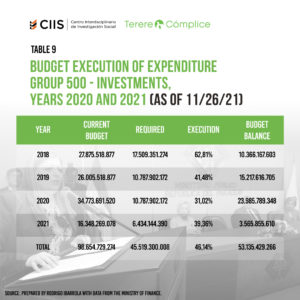
The final execution as of December 31, 2021 may have ended somewhat higher. But this does not invalidate the analysis for two very simple reasons. First, the management -and the shortage- takes place throughout the year; consequently, the administrative management should support the field work during the period and, second, it is usual practice in public institutions to process payments at the end of the year without much rigor (whether or not the contracted goods and services are actually delivered) in order to inflate the budget execution at the end of the year, a situation that would distort the analysis.
In conclusion, as we have seen, except for the simplest execution items because they do not require bidding (personal services, travel expenses) or because the procedures are simple, with standardized specifications and little competition (fuel and rents), most of the expenditure subgroups show poor execution. Therefore, if there is a lack of supplies, reagents, vehicle and building repairs, covers and other safety, office or laboratory equipment, it is due to inefficient management rather than a lack of resources. Consequently, at the time of the strike, the resources to meet the claims were there, patiently waiting. This is what we need to discuss.
Cover image: Onlivepy
